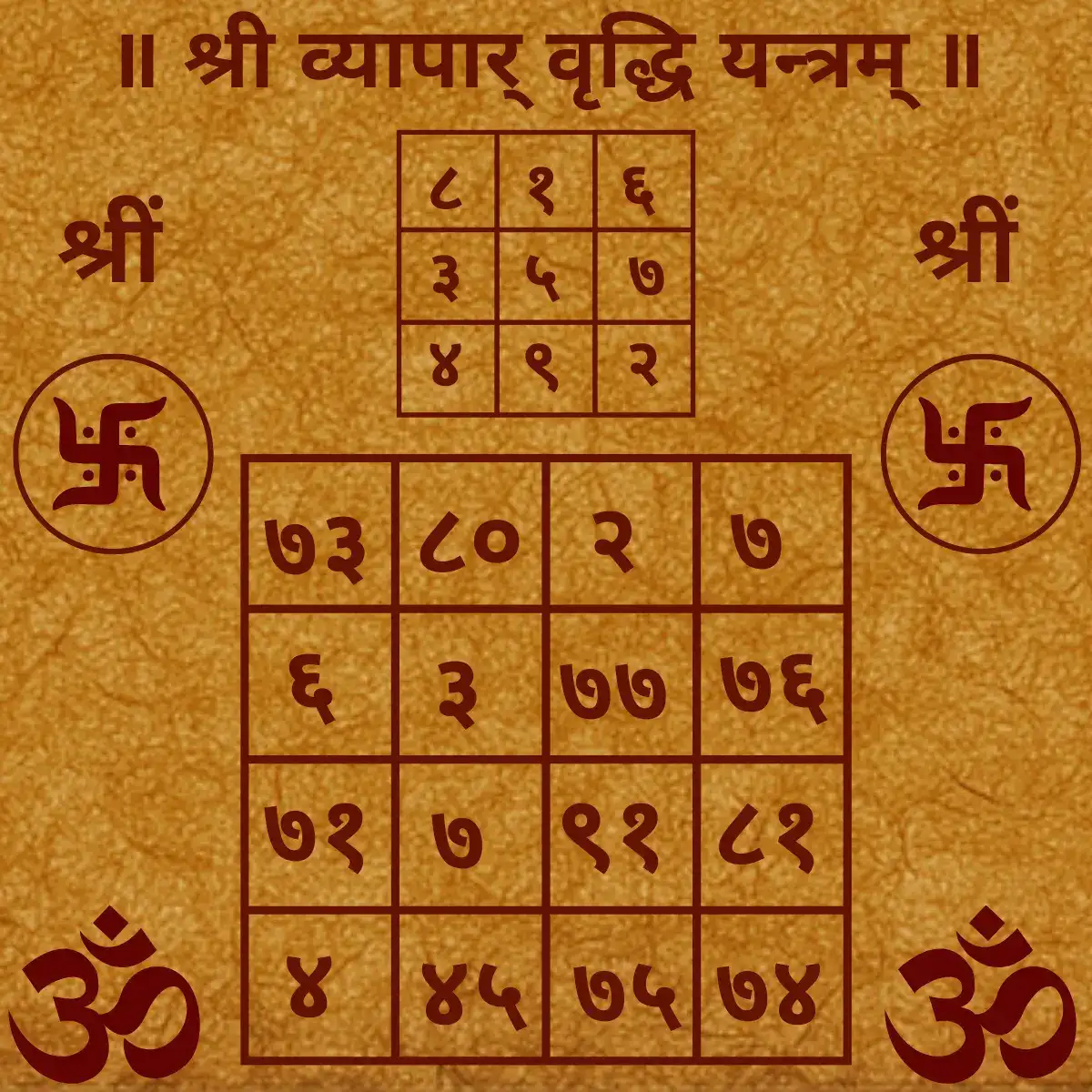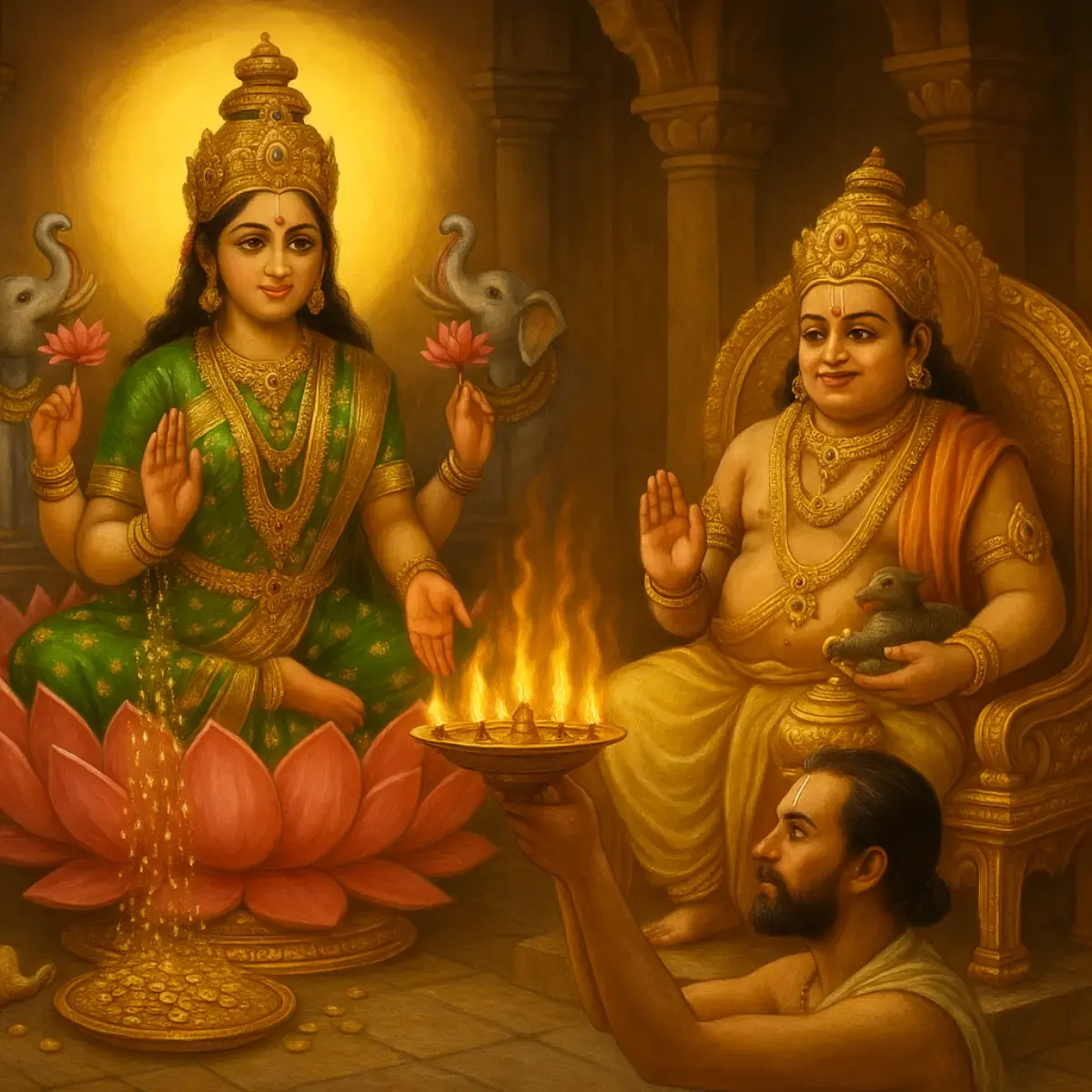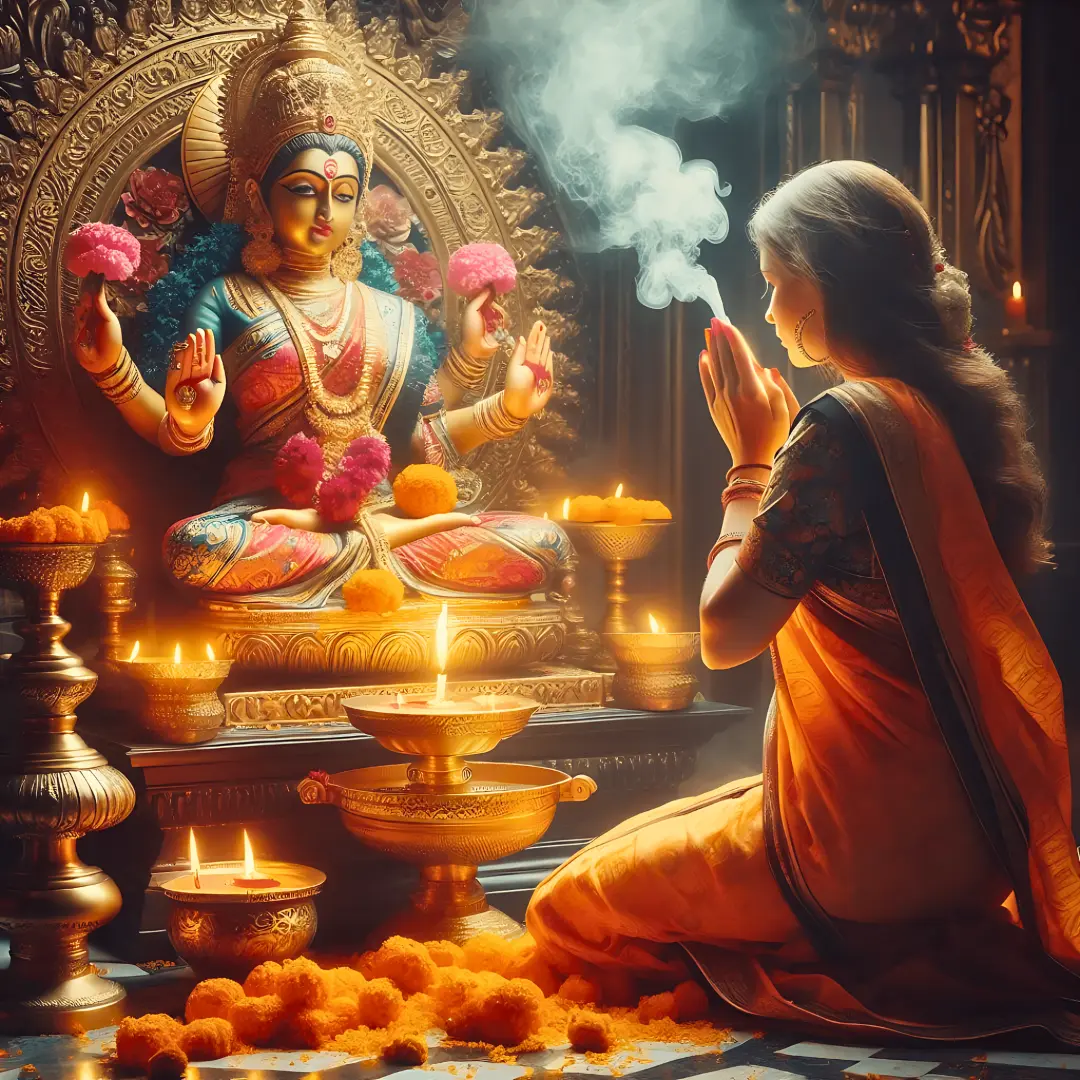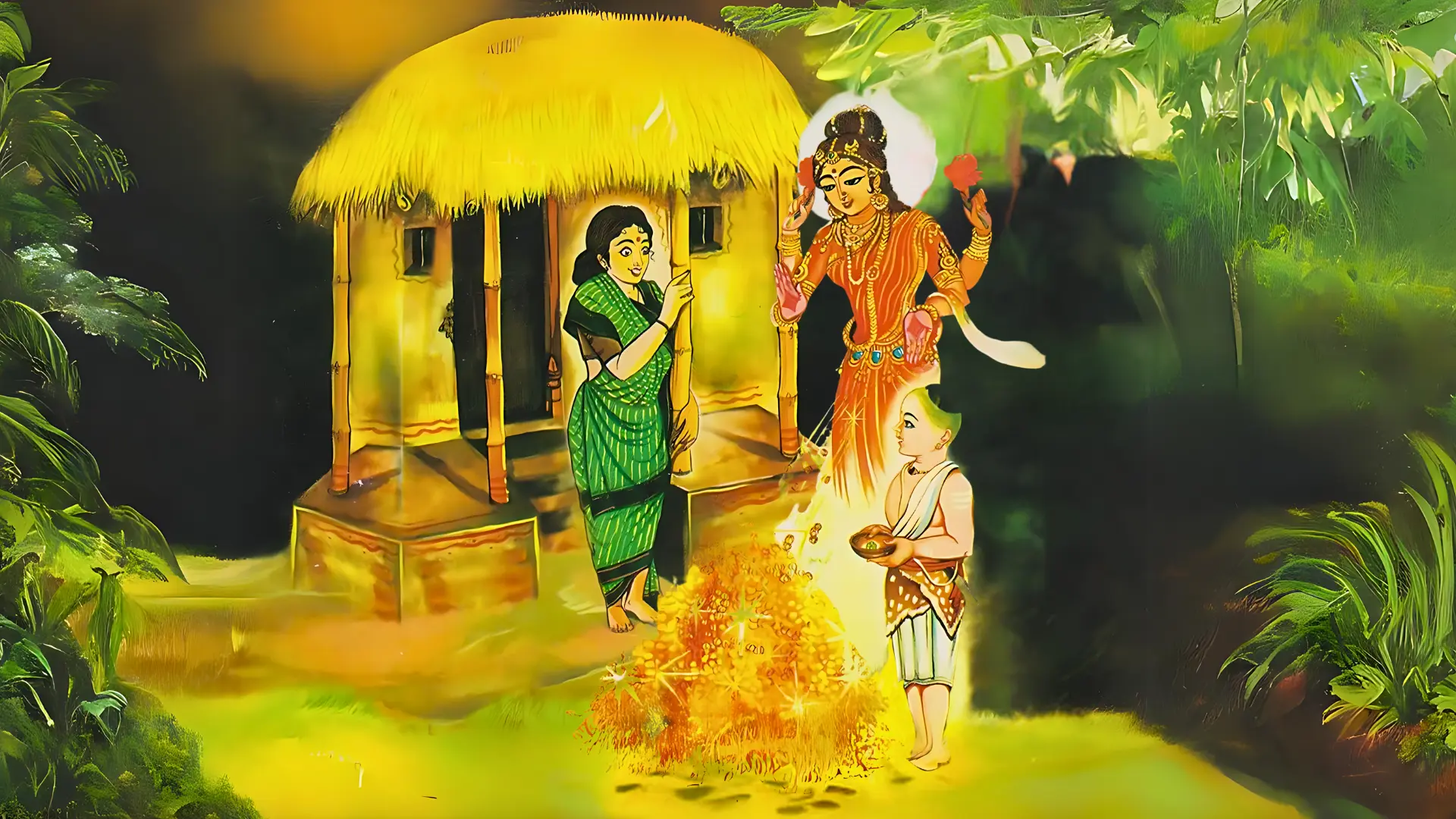The Meaning of Kanakadhara
The simplest way to understand the kanakadhara meaning is this: “kanaka” is gold, “dhara” is an unbroken stream, Lakshmi’s grace flowing into one’s life as sustenance, dignity, and right opportunities. For seekers who prefer clarity up front, this page offers the kanakadhara meaning in english while honoring regional learning; families often ask for kanakadhara meaning in telugu so elders and children can absorb it together. Think of this as kanakdhara strot arth sahit, devotional feeling supported by living, practical meaning.
The Kanakadhara Stotram composed by Adi Shankaracharya is a tribute to Goddess Lakshmi. It consists of 21 verses. ‘Kanaka’ means ‘gold’ while ‘dhara’ means ‘flow’. Hence, the Kanakadhara Stotram brings in a flow of wealth and prosperity helping one repay debts and loans. Lets Explore the Kanakadhara stotram meaning with the wordings.
IAs you read ahead, you’ll find the kanakadhara stotram meaning in english woven verse-by-verse so that the poetry lands as guidance, not just sound. If your home language is Telugu, consider keeping a brief note of the kanakadhara stotram meaning telugu alongside the recitation; when the heart grasps the sense, the mantra settles deeper and begins to shape daily decisions.
Kanakadhara stotram meaning with the wordings (18 Main Verses)
Many devotees like to listen while reading, kanakdhara strot sunayen softly in the background as you contemplate each verse. The stotra, also spelled kanakdhara strotam, gently turns the mind inward; a habit of listening and reflecting together prepares the heart for Lakshmi’s glance described in every śloka below.
1.
Aṅgaṁ hareḥ pulakabhūṣaṇamāśrayantī
bhṛṅgāṅganeva mukulābharaṇaṁ tamālam |
Aṅgīkṛtākhilavibhūtirapāṅgalīlā
māṅgalyadāstu mama maṅgaladevatāyāḥ ||1||
Meaning:
Like a garland shining with sapphire-blue hues near the chest of Lord Viṣṇu, Lakṣmī Devi’s chain of sidelong glances fulfills all desires, even those of Bhagavān Himself. May it bring auspiciousness to me.
As these opening verses unfold, what people call kanakdhara mantra benefits are really the fruits of inner alignment, clarity replaces restlessness, work gains integrity, and timely support appears. Wealth then arrives as a responsibility to be handled with grace, not as a distraction.
May the side-glance of the Goddess, who makes Lord Hari’s body bloom with bliss like goosebumps, just as a bee rests on a budding flower, bless me with auspiciousness. Her very glance carries all of divine opulence and grace.
2.
Mugdhā muhurvidadhatī vadane murāreḥ
prematrapāpraṇihitāni gatāgatāni |
Mālā dṛśormadhukarīva mahotpale yā
sā me śriyaṁ diśatu sāgarasambhavāyāḥ ||2||
Meaning:
Even the most brilliant souls gain access to the supreme heavens by the compassionate glance of Sri Lakṣmī. May that glowing, joy-filled gaze of the lotus-dwelling goddess bring me nourishment and success.
When seekers sit with these lines sincerely, the kanakdhara stotra benefits show up as steady uplift: relief from anxious money-loops, wiser spending, cleaner sources of income, and courage to choose dharmic work over shortcuts. Lakshmi’s glance nourishes self-respect before it multiplies resources.
May the Goddess born from the ocean, whose eyes move shyly in love toward Murāri (Lord Viṣṇu) and resemble bees playing over large lotuses, bestow prosperity upon me.
3.
Viśvāmarendrapadavibhramadānadakṣam
ānandaheturadhikaṁ muravidviṣo’pi |
Īṣanniṣīdatu mayi kṣaṇamīkṣaṇārdham
indīvarodarasahodaramindirāyāḥ ||3||
Meaning:
Even a brief moment of the Goddess’s side-glance, which has the power to bestow lordship over the heavens and bring supreme bliss even to Viṣṇu, may it fall upon me and bless me.
4.
Āmīlitākṣamadhigamya mudā mukundam
ānandakandamanimeṣamanangatantram |
Ākekarasthitakanīnikapakṣmanetraṁ
bhūtyai bhavenmama bhujaṅgaśayāṅganāyāḥ ||4||
Meaning:
May the half-closed, joyful glance of Lakṣmī Devi, who constantly gazes at Mukunda, the source of bliss, protect and prosper me. Her focused, unmoving eyes radiate the energy of love and beauty.
5.
Bāhvantare madhujitaḥ śritakaustubhe yā
hārāvalīva harinīlamayī vibhāti |
Kāmapradā bhagavato’pi kaṭākṣamālā
kalyāṇamāvahatu me kamalālayāyāḥ ||5||
Meaning:
Like a garland shining with sapphire-blue hues near the chest of Lord Viṣṇu, Lakṣmī Devi’s chain of sidelong glances fulfills all desires, even those of Bhagavān Himself. May it bring auspiciousness to me.
6.
Kālāmbudālalalitorasi kaiṭabhārer
dhārādhare sphurati yā taḍidaṅganeva |
Mātuḥ samastajagatāṁ mahanīyamūrtir
bhadrāṇi me diśatu bhārgavanandanāyāḥ ||6||
Meaning:
She shines on the dark-blue chest of Viṣṇu like lightning on a rain-laden cloud. This divine form of the Mother of the worlds, daughter of Bhṛgu, may she grant me goodness and auspiciousness.
7.
Prāptaṁ padaṁ prathamataḥ kila yatprabhāvān
māṅgalyabhāji madhumāthini manmathena |
Mayyāpatettadiha mantharamīkṣaṇārdhaṁ
mandālasaṁ ca makarālayakanyakāyāḥ ||7||
Meaning:
It was Her glance that helped Kāmadeva first influence Madhusūdana. May that same slow, graceful, half-glance of the daughter of the ocean fall upon me too, bringing with it divine blessings.
8.
Dadyād dayānupavano draviṇāmbudhārām
asminnakiñcanavihaṅgaśiśau viṣaṇṇe |
Duṣkarmagharmamapanīya cirāya dūraṁ
nārāyaṇapraṇayinīnayanāmbuvāhaḥ ||8||
Meaning:
Let the breeze of her compassion shower me, a helpless fledgling, with the rains of wealth. Let her glances wash away the heat of my bad karma and bless me from the eyes that love Nārāyaṇa.
9.
Iṣṭā viśiṣṭamatayo’pi yayā dayārdra-
dṛṣṭyā triviṣṭapapadaṁ sulabhaṁ labhante |
Dṛṣṭiḥ prahṛṣṭakamalodaradīptiriṣṭāṁ
puṣṭiṁ kṛśīṣṭa mama puṣkaraviṣṭarāyāḥ ||9||
Meaning:
Even the most brilliant souls gain access to the supreme heavens by the compassionate glance of Lakṣmī. May that glowing, joy-filled gaze of the lotus-dwelling goddess bring me nourishment and success.
10.
Gīrdevateti garuḍadhvajasundarīti
śākambarīti śaśiśekharavallabheti |
Sṛṣṭisthitipralayakeliṣu saṁsthitāyai
tasyai namastribhuvanai kagurostaruṇyai ||10||
Meaning:
I bow to that youthful Goddess, the Mother of the three worlds, known as Sarasvatī, Śākambarī, Viṣṇu’s beloved, and consort of Śiva. She plays in the cosmic acts of creation, sustenance, and destruction.
11.
Śrutyai namo’stu śubhakarmaphalaprasūtyai
ratyai namo’stu ramaṇīyaguṇārṇavāyai |
Śaktyai namo’stu śatapatraniketanāyai
puṣṭyai namo’stu puruṣottamavallabhāyai ||11||
Meaning:
Salutations to her who is the essence of the Vedas, the giver of all good karmic results, the ocean of lovely virtues, the divine power behind all creation, and the beloved of Puruṣottama (Viṣṇu).
12.
Namo’stu nālīkanibhānanāyai
namo’stu dugdhodadhijanmabhūtyai |
Namo’stu somāmṛtasodarāyai
namo’stu nārāyaṇavallabhāyai ||12||
Meaning:
Salutations to the one with a lotus-like face, born from the ocean of milk, sister of the Moon and Nectar, and the beloved of Nārāyaṇa.
13.
Sampatkarāṇi sakalendriyanandanāni
sāmrājyadānavibhavāni saroruhākṣi |
Tvadvandanāni duritāharaṇodyatāni
māmeva mātaranishaṁ kalayantu manye ||13||
Meaning:
O lotus-eyed Mother, your worship brings all wealth, pleasures of the senses, and royal prosperity. May I always offer you such worship that removes all sorrows and sins.
14.
Yatkaṭākṣasamupāsanāvidhiḥ
sevakasya sakalārthasampadaḥ |
Saṁtanoti vacanāṅgamānasais
tvāṁ murārihṛdayeśvarīṁ bhaje ||14||
Meaning:
By worshipping you through word, body, and mind, your devotee receives all that he needs. I adore you, the Queen of Lord Murāri’s heart, and seek your gracious glance.
15.
Sarasijanilaye sarojahaste
dhavalatamāṁśukagandhamālyaśobhe |
Bhagavati harivallabhe manojñe
tribhuvanabhūtikari prasīda mahyam ||15||
Meaning:
O lotus-dwelling, lotus-handed Goddess! You shine with white garments, fragrant garlands, and heavenly beauty. You are Hari’s beloved and the source of fortune across all three worlds, please bless me.
16.
Digghastibhiḥ kanakakumbhamukhāvasṛṣṭa-
svarvāhinīvimalacārujalaplutāṅgīm |
Prātar namāmi jagatāṁ jananīmaśeṣa-
lokādhināthagṛhiṇīmamṛtābdhiputrīm ||16||
Meaning:
In the morning I bow to the Mother of all creation, the consort of the Lord of the worlds, daughter of the ocean of nectar, whose body is bathed in pure waters poured from golden vessels by celestial elephants.
17.
Kamale kamalākṣavallabhe
tvaṁ karuṇāpūrataraṅgitairapāṅgaiḥ |
Avalokaya māmakiñcanānāṁ
prathamaṁ pātramakṛtrimaṁ dayāyāḥ ||17||
Meaning:
O Kamalā, beloved of the lotus-eyed Lord! With waves of compassion in your sidelong glances, look upon me, poor and helpless, who is the true and first object of your mercy.
18.
Stuvanti ye stutibhiramūbhiranvahaṁ
trayīmayīṁ tribhuvanamātaraṁ ramām |
Guṇādhikā gurutarabhāgyabhāgino
bhavanti te bhuvi budhabhāvitāśayāḥ ||18||
Meaning:
Those who daily praise this divine Mother of the three worlds with these verses, the embodiment of the Vedas, become rich in virtues, blessed with great fortune, and are honored among the wise.
Before we Explore the Benefits of the Kanakadhara Stotram we shall first see a Powerful Yantram known as the Vyapar Vruddhi Yantram
Śrī Vyāpāra-Vṛddhi-Yantraḥ (Sri Vyapaar Vruddhi Yantram)
Śrī Vyāpāra-Vṛddhi-Yantra (Sri Vyapaar Vruddhi Yantram) is a practical sādhana-tantra where Sūrya-tejas and Śrī-śakti are yoked for dṛśyatā, pariṇāma, and suvyavasthita vit-pravāha. In paramparā, the three Sūrya-bījās, hrāṁ, hrīṁ, hrauṁ, are contemplated as a single current of prāṇa, prakāśa, and tejas.
This yantra condenses that tri-sūrya spanda and routes it through independent, Non-Vaishnava Śrī-tattva so that market attention ripens into receivables, stable turnover, and clean cash discipline. The mahā-śīrṣikā “॥ श्री व्यापार वृद्धि यन्त्रम् ॥” states the saṅkalpa; the twin “श्री” mudrās and the maṅgala-svastika invite ānanda-lakṣmī to the inflow–outflow nāḍīs of the enterprise, while the lower ॐ marks earth the field.
Just above the principal kriyā-kṣetra shines a 3×3 samatā-maṇḍala in the classical order 8-1-6 / 3-5-7 / 4-9-2, distributing heat evenly so that the stronger vyāpāra-spanda of the large grid remains śītal-tejas rather than uṣṇa-kṣobha. The hṛdaya of the plate is the 4×4 saṅkhyā-yantra inscribed in Devanāgarī exactly as in your corrected design: first row ७३-८०-२-७, second row ६-३-७७-७६, third row ७१-७-९१-८१, fourth row ४-४५-७५-७४.

The deliberate mingling of mahā-mūlyāṅkas such as ८०, ९१, ८१, ७७–७६, ७५–७४, ७३, ७१, ४५ with laghu-kendraṅkas like २, ३, ४, ६, ७ creates a ledger-like resonance where bulk events, partnerships, and quarter closures are anchored while day-to-day approvals, petty-cash movement, and pricing micro-shifts remain nimble. Because Śrī is taken here in her sovereign Non-Vaishnava mahimā, the yantra is tuned to the realities of inventory rotation, payment cycles, and the human tone of collections.
The plate is best installed facing East or North so that prātaḥ-sūrya touches it. Each morning, as the attached diagram itself suggests, a small bindu of kumkuma, followed by haridrā-lepa, followed by akṣata, is placed on the uttara-rekhā with the right hand, and a brief Śrī-bīja-japa is maintained. Over weeks the field begins to show its signature: clearer inbound interest, steadier expenses, fewer stuck payments, and a calm, warm mind while negotiating, Sūrya gives visibility; Śrī gives retention.
Upayoga-Phalāni: Śrī Vyāpāra-Vṛddhi-Yantrasya Anubhava-Lābhaḥ (Benefits of the Sri Vyapaar Vruddhi Yantram)
The foremost change is in darśana-śakti, people truly notice the dukāna, the proposal, the listing, or the landing page. This attention is qualified, not noisy, and therefore converts. Saṅgraha begins to flow; reminders land firmly yet politely because Sūrya dissolves hesitation while Śrī protects good-will.
Slow stock moves with dignity rather than distress, often through timely pairing or seasonal positioning. Expenditure lines grow tidy of their own accord; dormant subscriptions fall away without inner friction. Conversations around price and terms become warm and lucid; buyers feel safe to assent.

Service practices observe steadier prayojana-praveśa and kāla-niṣpatti; retail and e-commerce feel basket-mātra-sthiti with reduced returns. For founders, sequencing becomes obvious, what to pursue, what to pause, because the yantra thins mental fog. Most precious is the artha-bhāva it cultivates: a poised willingness to receive, fairness in giving, and a wise reinvestment rhythm rather than impulsive spend or fearful hoarding.
Racanā-Vivecana: Maṇḍala, Rekhā-Kavaca, Bindu (The Science of the Sri Vyapaar Vruddhi Yantram)
The design is dvi-tala. The ūrdhva 3×3 samatā-maṇḍala, 8-1-6 / 3-5-7 / 4-9-2, acts as a skylight balancing the eight dik-cakras. Beneath it, the bold-framed 4×4 vyāpāra-kṣetra carries the commercial encoding already detailed. Equal cell-proportions distribute prāṇa through the four pādas, īśāna, āgneyā, nairṛtya, vāyavya, without bias. There is no drawn bindu; the gupta-bindu lies at the crossing between ३-७७-७-९१, the gentle dr̥ṣṭi-sthāna for japa.
The heavier aṅkas, ८०, ९१, ८१, ७७, ७६, ७५, ७४, ७३, ७१, brace the perimeter as a rekhā-kavaca, while smaller inner digits keep kriyā elastic. The paired “श्री” seals stabilize inflow and outflow; the svastika-cakras hold auspicious spin; the lower ॐ glyphs earth the yantra and indicate the touch-points for light upacāra. The parchment-like background and deep maroon script help the mind re-enter saṅkalpa in the midst of office noise with a single glance at the attached diagram.
The Grid Magic of the Sri Vyapaar Vruddhi Yantram
A yantra is jyāmīti that carries mantra. The crown navaka preserves navāṁśa-sāmya, softening uṣṇatā so relationships do not scorch. Maṇipūra is brightened yet Anāhata remains open, an ideal state for vikraya, mūlya-saṃvāda, and saṅgraha. The caturbhujīya grid extends that balance into kriyā, four seasons, four cash cycles, four buyer moods, four operational pillars. Gazing along the diagonals lengthens breath and silences inner noise; decisions become kinder and firmer. The uttara-ardha naturally excites Sūrya-vāhana, publicity and reach, while the dakṣiṇa-ardha nourishes Śrī-saṃgraha, consolidation, saving, and reinvestment.
Large saṅkhyā-nodes, ८०, ९१, ८१, ७७–७६, ७५–७४, ७३, ७१, ४५, behave like mahā-granthis catching bulk orders, distributor accords, and quarter closures. The small pivots, २, ३, ४, ६, ७, sustain micro-pravāha such as courier runs, petty-cash, and quick approvals. Together they prevent the twin errors of aggressive marketing without cash discipline and thrift without growth. Subtle-body wise, it is Sūrya’s straight line guided by Śrī’s gentle curve, utsāha with mārjava.
Bija Mantra Magic of the Sri Vyapaar Vruddhi Yantram
At sunrise, facing East, touch the top frame as in the attachment with a tiny bindu of kumkuma, then haridrā, then akṣata, and allow the gaze to rest upon ३-७७-७-९१. Let the breath carry Śrī-bīja softly: “ॐ श्रीं महालक्ष्म्यै नमः” and “ॐ ह्रीं श्रीं महालक्ष्म्यै नमः.” When a fuller current is desired, seed the round with the tri-Sūrya resonance, “ॐ ह्रां ह्रीं ह्रौंः सः सूर्याय नमः”, and then return to Śrī-bīja so that tejas is held in mṛdutā.

The Lakṣmī-Gāyatrīs, “ॐ श्रीं महालक्ष्म्यै च विद्महे, कमलवासिन्यै धीमहि, तन्नो लक्ष्मीः प्रचोदयात्” and “ॐ धनप्रदायै विद्महे, सर्वसिद्ध्यै धीमहि, तन्नो लक्ष्मीः प्रचोदयात्”, may be recited on Fridays, śukla-pakṣa tithis, and Pushya-nakṣatra. Paramparā holds that full Guru-dīkṣā refines nyāsa and prāṇa-pratiṣṭhā; until then, keep the vrata sāttvika, śuci, and consistent.
Yantra-Nirmāṇa-Vidhiḥ: yantrachants.com Pariśrānta-Paramparā
At yantrachants.com the Vyāpāra-Vṛddhi-Yantra is prepared as a mantra-śarīra, never as a mere print. According to the client’s prayojana it is inscribed on bhojapatra with sindūra–aṣṭhagandha lepa. The exact corrected layouts are retained, crown ८-१-६ / ३-५-७ / ४-९-२, main grid ७३-८०-२-७ / ६-३-७७-७६ / ७१-७-९१-८१ / ४-४५-७५-७४, so that the saṅkhyā-rasa remains inviolate.

Saṃskāras are timed at Friday udaya-kāla with Pushya, Rohiṇī, or Uttara-Phālgunī where possible. The pūjā includes Śrī-Sūktam, a focused Āditya-Hṛdayam segment to awaken tri-Sūrya spanda, and Lakṣmī-Kubera-arcana for balanced expansion and retention. Corner-nyāsa vivifies the four quarters; a rekhā-kavaca is drawn; the gupta-bindu is touched with a single rose-scented jal-bindu so the yantra remains office-friendly.
Japa-saṅkalpa of 108 Śrī-bījas with 27 Sūrya-bīja seeds is completed; the yantra is rested, wrapped in rakta-sūtra, with a cowrie and akṣata, and sent with precise sthāpana-nirdiśa near the cash desk, accounts table, proposal station, or the digital operations hub. This nirmāṇa-vidhi aligns with the bhojapatra-yantra prakriyā introduced on the yantrachants.com pradhāna-pṛṣṭha; the attached diagram may be used as your quick visual pramāṇa while installing.
Guru-Mahattvam: Antaḥ-Jyāmīti-Samanvayaḥ
Yantra is a precise map; Sad-Guru is the sahacara who has walked the terrain. Most ventures fail not for lack of opportunity but due to prāṇa-doḷā, surges of urgency followed by avoidance. Through upadeśa the Guru steadies icchā-śakti, purifies kriyā-śakti, and clarifies jñāna-śakti so the outer jyāmīti can couple with your inner jyāmīti. Then the tiny act your plate teaches, placing kumkuma, haridrā, and akṣata on the top frame, ceases to be superstition and becomes saṅgati-kriyā, a daily synchronization of manas, prāṇa, and saṅkhyā-kṣetra.
Negotiations grow calm yet firm; promises are cleaner; debtor-boundaries become natural, Sūrya’s straightness tempered by Śrī’s grace. The Guru also shields from overreach: tejas without mṛdutā becomes harsh; comfort without utsāha becomes stagnation. By simple corrections, udaya-jāgaraṇa, śuci-lekhā, niyata follow-ups, mārdava-vāk, the prāṇa-leaks close and the yantra amplifies what is already upright. Across market seasons this anchoring gives ciram-sthiratā, the true śrī from which sensible lābha flows.
Experiences with Sri Vyapaar Vruddhi Yantram
Within three Fridays sādhakas often witness unobtrusive coincidences: a dormant client reappears, a stuck invoice clears, or a slow SKU moves. Svapnas of golden or red lotuses, of counting coins with quiet breath, or of arranging shelves are classic Śrī-lakṣaṇas. A gentle warmth at the nābhi during sunrise japa and an ease over the hṛdaya at day’s end indicate that the field has joined your rhythm. On Dhanteras, Akṣaya-Tṛtīyā, and Friday pūrṇimā, a single dīpa and the recitation of Śrī-Sūktam before weekly closure strengthen the kavaca around the month’s cash cycle.
The Tantrika Value of Sri Vyapaar Vruddhi Yantram
Tantra venerates Mahālakṣmī as Daridrya-Bhedinī, the severer of scarcity-saṁskāras. Invoked through this grid, she acts as an āstra that cuts fear, shame, and confusion around wealth while cooling the blaze of commerce into śītala-tejas. The saving often arrives not as a dramatic windfall but as the right karmic opening held steady, tidier shelves, kinder speech, timely follow-ups, and margins that quietly heal.
Saṅkhyā-Yantra-Niveśaḥ: Pṛṣṭh-Darśane Yathā
The plate carries two saṅkhyā-kṣetras. The crown navaka is 8-1-6 / 3-5-7 / 4-9-2 in left-to-right, top-to-bottom order, the standard samatā-maṇḍala that equalizes dik-prāṇa. The principal caturdaśaka beneath it is exactly as follows when read row-wise from the top: ७३-८०-२-७, then ६-३-७७-७६, then ७१-७-९१-८१, and finally ४-४५-७५-७४. Keep the śīrṣikā at the top, the twin “श्री” seals flanking the grid, and the lower ॐ marks as grounding prameyas.
During practice, let the eyes rest where the diagonals cross between ३-७७-७-९१, and, with the right hand, place the kumkuma-haridrā-akṣata tri-bindu upon the uttara-rekhā exactly as the attached yantra illustrates. This small exactitude is what turns geometry into lived prosperity.
Some Benefits of Kanakadhara Stotram (కనకధారా స్తోత్రం)
If your family is bilingual, keep a simple sheet titled “kanakadhara stotram meaning telugu” near the altar so elders and children grasp the sense while chanting. Meaning-led practice builds śraddhā, turning this stotra into a shared household discipline rather than an occasional ritual. Let us see the kanakadhara stotram meaning in Telugu
కనకధారా స్తోత్రం: 21 శ్లోకాల తెలుగు అర్థం
శ్లోకం 1
హరియైన విష్ణుమూర్తి వక్షస్థలంలో లక్ష్మిదేవి కూర్చుని, భ్రమరమల్లె పుష్పములా నిశ్శబ్దంగా ప్రకాశిస్తోంది. ఆ లక్ష్మీదేవి దయకటాక్షం నన్ను శుభప్రదంగా అలంకరించుగాక.
శ్లోకం 2
లక్ష్మీదేవి ప్రేమతో నారాయణుని చూస్తూ, సిగ్గుతో తిరిగి కన్నును తిప్పుకుంటుంది. కమలం మీద తేనేటీగ మెల్లగా తిరుగుతున్నట్లుగా ఆమె చూపు, నా మీద ఐశ్వర్యాన్ని ప్రసరించుగాక.
శ్లోకం 3
దేవేంద్రుడు కూడా మహాసంపదలు పొందినట్లుగా, లక్ష్మీదేవి కటాక్షం సాక్షాత్కరించే శక్తి కలిగివుంది. ఆ తారలవంటి కనురెప్పల దృష్టి నాపై పడుగాక.
శ్లోకం 4
ముకుందుడిని (విష్ణువును) చూస్తూ, కన్నులు మత్తుగా మూసుకుపోయి ప్రేమతో నిండిన చూపులు కలిగిన లక్ష్మీ, తన కరుణారసమయిన కటాక్షాన్ని నా మీద ప్రసరించుగాక.
శ్లోకం 5
మధుసూదనుని వక్షఃస్థలంలో కౌస్తుభ మణితోకలసి ప్రకాశించే లక్ష్మి, నీలమణులా మెరుస్తూ ఉంది. ఆమె కటాక్షం నా మీద శుభఫలములు కురిపించుగాక.
శ్లోకం 6
నారాయణుని వక్షస్థలంలో నీల మేఘముల వంటి కాంతితో కూర్చున్న లక్ష్మీ, దయార్ద్ర దృష్టితో నాపై ప్రసన్నముగా చూడుగాక.
శ్లోకం 7
హరిముఖాన్ని చూసి, మత్తుగా మారి, లజ్జతో కళ్లను తిప్పుకొనే లక్ష్మి—ఆ సిగ్గు, ఆ ఆనంద కటాక్షం నాపై ప్రసాదముగా కురుగాక.
శ్లోకం 8
లక్ష్మీదేవి చూపు వర్షం వంటి కరుణా కటాక్షం, నా పాపఫలములను తొలగించి, సత్యంగా సంపద వర్షించుగాక.
శ్లోకం 9
నారాయణునిపై ప్రణయభరితంగా దృష్టి సారించే లక్ష్మి, తన కరుణామయ కటాక్షాన్ని నాపై ప్రసాదించి, దరిద్రతను తొలగించుగాక.
శ్లోకం 10
మహాత్ములు, సద్గుణులు కూడా, లక్ష్మీదేవి కటాక్షం ద్వారా భాగ్యశాలులు అవుతారు. ఆ దయా దృష్టి నా మీద ఉండుగాక.
శ్లోకం 11
వేదమాత, గిరిదేవత, లోకాలందరికీ శ్రేయస్సు ప్రసాదించే లక్ష్మిదేవి, తన కరుణతో నన్ను ఐశ్వర్యవంతుడిని చేయుగాక.
శ్లోకం 12
మూడు లోకాలలోను విస్తరించి ఉన్న శ్రీదేవి, తన సాన్నిధ్యం ద్వారా నన్ను శుభసంపదలతో నింపుగాక.
శ్లోకం 13
పద్మాలపై కూర్చుని, దివ్యమంగళమూర్తిగా ప్రకాశించే లక్ష్మి, తన దయా చూపుతో నన్ను కాపాడుగాక.
శ్లోకం 14
తెల్లవస్త్రాలతో, శోభాయమానముగా ఉండే లక్ష్మీ, తన కటాక్షం ద్వారా నాకు శాంతి, సంపదలు ప్రసాదించుగాక.
శ్లోకం 15
సర్వలోకాలకూ కాంతిరూపిణిగా ఉండే లక్ష్మి, తన దివ్య కాంతి ద్వారా నా జీవితం ప్రకాశింపజేయుగాక.
శ్లోకం 16
వేలాది దేవతలూ స్తుతించే లక్ష్మీ, తన అనుగ్రహం నాపై కురిపించుగాక.
శ్లోకం 17
మధుసూదనుని ప్రియభార్య అయిన లక్ష్మి, తన మంగళదృష్టి నాపై కురిపించి, నా దరిద్రతను తొలగించుగాక.
శ్లోకం 18
కామధేనువు వలె వాంఛాకల్పతరువు క్రింద కూర్చున్న లక్ష్మి, తన దివ్యకటాక్షంతో నన్ను సౌభాగ్యవంతునిగా చేయుగాక.
శ్లోకం 19
ఆశలు నెరవేర్చే, శుభసంపదల వర్షిణి లక్ష్మి, నా జీవితాన్ని సుభిక్షముగా తీర్చుగాక.
శ్లోకం 20
ఈ స్తోత్రాన్ని ఎవరైనా భక్తిపూర్వకముగా చదివితే, వారికి దరిద్రం తొలగిపోతుంది, సంపదలు కలుగుతాయి.
శ్లోకం 21
శ్రీ ఆదిశంకరాచార్యులచే రచించబడిన ఈ స్తోత్రాన్ని ఉదయం, మధ్యాహ్నం, సాయంత్రం చదివితే, వారు కుబేరుడి వలె సంపదవంతులవుతారు.
It is also good for businesses and start-ups. Ideally, you should chant this Stotram on Fridays and Purnima for best results. The chanter’s house shall be prosperous and abundant. There shall never be a dearth of grains in such a house. The Stotram transports one to higher states of consciousness. Goddess Lakshmi enters the house of the chanter in the form of wealth. People suffering from poverty due to past bad karma gain respite.
A few Kanakadhara stotram Benefits:
Among the widely acknowledged Kanakadhara Stotram benefits is its ability to dissolve ancestral poverty patterns and bring auspicious openings. From business elevation to household peace, this Stotram works in unseen yet definite ways to invoke Lakshmi’s compassionate glances.
For daily use, many homes print a neat booklet, search for a handy kanak dhara strot pdf, and keep one copy by the lamp and another in a travel pouch. A clean text within reach invites spontaneous chanting, helps guests participate, and gently anchors the home in sattvic rhythm.
Among the widely acknowledged Kanakadhara Stotram benefits is its ability to dissolve ancestral poverty patterns and bring auspicious openings. From business elevation to household peace, this Stotram works in unseen yet definite ways to invoke Lakshmi’s compassionate glances.
Benefits of chanting Kanakadhara stotram daily:
The benefits of chanting Kanakadhara Stotram daily go far beyond money. It subtly shifts one’s consciousness into humility, attracting not just wealth but the wisdom to handle it with grace. Daily chanting becomes a spiritual discipline that aligns our inner frequency to divine prosperity.
On busy days, kanakdhara strot sunayen during a commute and match the rhythm with mindful breathing; later, sit for a few minutes to recite aloud. Listening with attention steadies the mind, and brief vocal recitation seals the intention for the day.
The benefits of chanting Kanakadhara Stotram daily go far beyond money. It subtly shifts one’s consciousness into humility, attracting not just wealth but the wisdom to handle it with grace. Daily chanting becomes a spiritual discipline that aligns our inner frequency to divine prosperity.

Adi Shankara glorifies Lakshmi Devi’s side glances at 13 places of the Kanakadhara Stotram emphasizing that a mere side glance of Devi can bring in untold wealth and benefits. Chanting the Stotram ends all financial difficulties and unemployment by giving the required energy for material accomplishment.
Devi does not personally come. She comes in the form of inspiration and ideas yielding fortune in the future. The Kanakadhara Stotram is extremely poetic describing the beauty, power, intelligence, and personality of Goddess Lakshmi.
It emphasizes her extreme beauty that even captivates the heart of Lord Vishnu.
Desirelessness is the Key to Long-Term Benefits
In a nutshell, the Kanakadhara Stotram vanquishes the demon of poverty and initiates a financially assured life. I want to emphasize with certainty that the Kanakadhara Stotram cannot generate wealth by mere recitation with a desire to become rich. Bhakti of Laxmi Devi has to be done with utter desirelessness, with humility in the heart, just to gain her Love. This is the only mood that will attract Devi’s attention and Grace.

The Kanakadhara Stotram should only be an effort to gain the Love of Devi with the Seva or service of chanting the Stotram to Her, for Her pleasure alone. Devi never fulfills desires born out of greed. Devi provides wealth for sustenance, That’s all.
The Story Behind Kanakadhara Stotram
The story of the Kanakadhara Stotram goes like this-
After the death of his father, the 4-year-old Shankara joined Guru Kula. As per the custom, the young Brahmin boys would go door-door collecting alms. These alms were then shared with fellow-god-brothers and consumed. The practice may seem bizarre as it promotes the act of begging which may appear socially reproachable. A true Brahmana should beg for alms; this was part of the original Sanatana Dharma system.
A true Brahmana of the modern day should attain Bhagavan, keeping that as a primary goal, and depend on Bhagavan for his sustenance. Bhagavan takes care of his needs through Seva and Donations. He need not categorically demand a fee for his services as a teacher. Devi will make arrangements for his upkeep and welfare.
By seeking alms or accepting donations without demand, a Brahmana subdues the ego and instills the virtue of humility. It also proves the dependence on Bhagawan.
One day young Shankara spotted a woman standing in front of a hut. With the hope of getting Bhiksha, Shankara called out “Bhavati Bhiksham Dehi” which means “Oh mother, give me alms”. Influenced by Shanakara’s brilliance, the old lady smiled at him. Startled as she was, she lived in utter poverty.
For clarity, bhavati bhiksham dehi meaning in english is a humble plea, “O Mother, please grant alms.” The force of these words lies in surrender, not in demand. When spoken with devotion, they open the heart to compassion, which is precisely what this story reveals.

Clad in tattered clothes, the lady immediately ran inside to see what she could offer.
Alas, there were only empty pots and pans. In Bharat, people sincerely followed this dictum- ‘Athithi devo Bhava’ which means ‘A guest is God in disguise’. Turning down a Brahmin disappointed on a Dwadashi day would incur sin, she thought. Suddenly, she remembered a gooseberry kept on the upper shelf of the kitchen. The gooseberry had shrunk and dried up.
However, that was the only asset she had. The lady doubtfully placed the gooseberry in Shankara’s bowl. Touched by her act, the Kanakadhara Stotram poured out from Shankara’s lotus mouth like ambrosia. He pleaded to Mahalakshmi to cast her merciful glance at this lady.
At first, Lakshmi Devi refused, as the lady had not performed any charity or good deeds in her previous births. Nobody can change the line of fate. However, Adi Shankara argued that a lady who offered her all to a Brahmin certainly deserved this fortune. As a result of his prayers, a downpour of golden gooseberries piled up on the ground. It was the rainfall of gold in broad daylight.
This showed that though Shankara had luxuries at his beck and call, he followed his dharma of asking Bhiksha. The lady’s hut which existed in Punnorkode got the name ‘Swarnathu Mana’ meaning ‘Golden House’.
A Mahalakshmi temple stands at that spot which was consecrated in 2018.
Process of Chanting Kanakadhara Stotram
Now I shall cover the process of chanting the Kanakadhara Stotram. Sit facing the east or north direction. The surroundings should be clean and conducive for Lakshmi Sadhana. The chanting should not be whimsical.
Keep meaning alongside sound, kanakdhara strot arth sahit, so that every verse guides action: gratitude before meals, integrity in earnings, and generosity in success. If you prefer booklets, maintain a tidy kanak dhara strot pdf at the altar and a digital copy on your phone for travel.

Chant it daily as a spiritual discipline. Light a ghee lamp in the morning to invite spiritual vibration. You can also keep an image of Lakshmi devi for ease in the Dhyana of the mother goddess. Then start the recitation once, thrice, or five times as time permits.
Remember that the kanakadhara meaning in english, “a stream of gold”, is symbolic first and literal later. It names the inner current of auspiciousness that blesses honest effort. In many homes, elders also ask for kanakadhara meaning in telugu so generations share the same understanding, making wealth a matter of values, not merely numbers.
You do not need initiation to recite Kanakadhara Stotram.All are eligible to chant this stotram.
Begin simply: read this kanakadhara stotram meaning in english once each morning, share a short kanakadhara stotram meaning in English, Tamil or telugu summary with elders in the evening, and align your work with dharma. The reason is that the Kanakadhara Stotram is popular and followed seriously in the Souther part of Bharat. Let this Kanakdhara strotam be the quiet soundtrack of a home that values dignity, devotion, and graceful prosperity.
Invite Śrī-Mahālakṣmī’s vāṇijya-kṛpā into your work. Message us on WhatsApp to request your Bhojpatra Sri Vyāpār Vṛddhi Yantra, prāṇa-pratiṣṭhita with Lakṣmī Gāyatrī and sent as prasāda—prepared personally for your need and dispatched with mantra-saṅkalpa.

Viraja Devi Dasi

